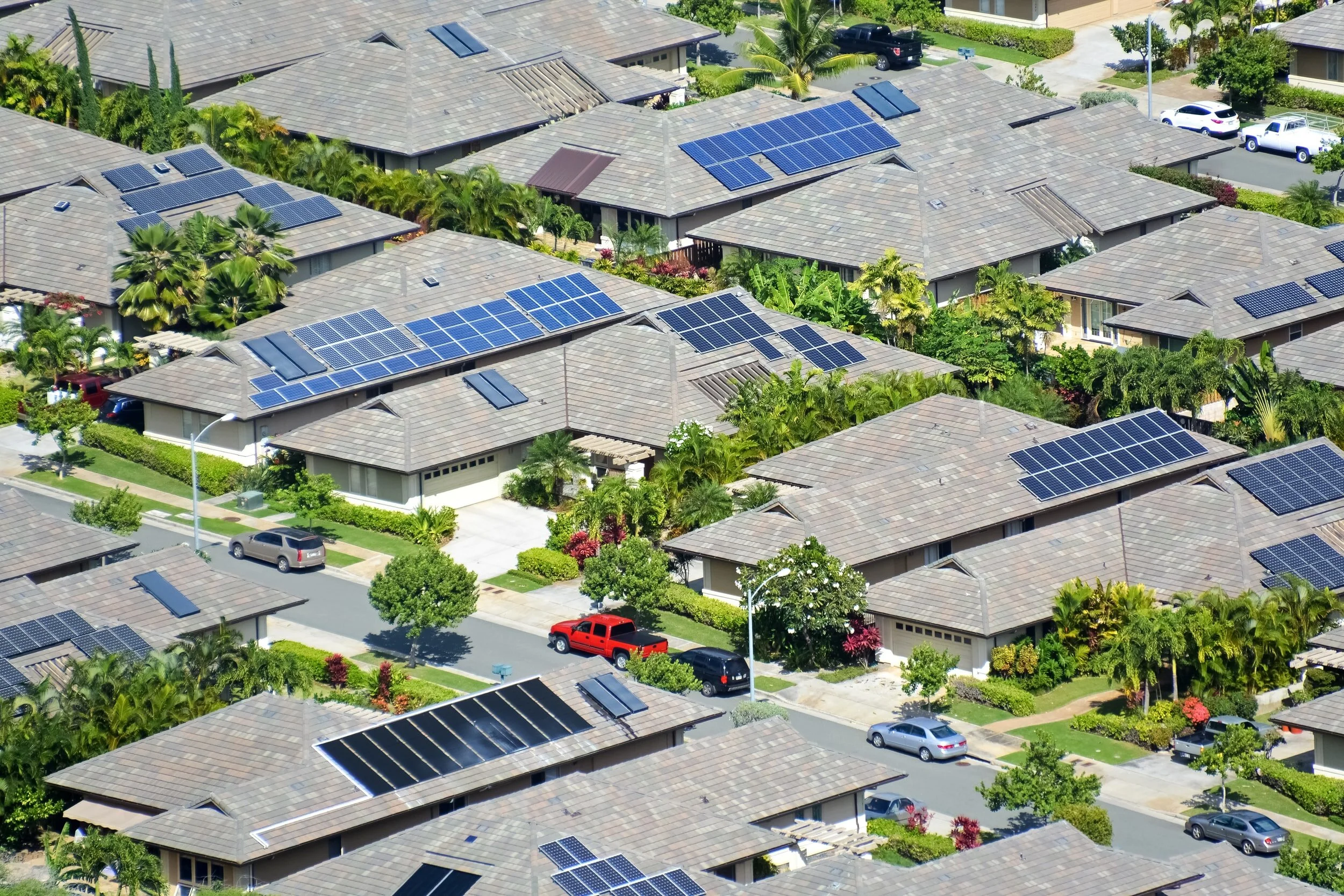Electric Rates for Solar Power and DERs
FERC Order 2222 sets the stage for DER resource planning
1. Customer solar power and other Distributed Energy Resources (DER) have the potential to become part of an electric provider’s resource planning
2. Regulatory bodies – the Federal Energy Regulatory Commission (FERC) and the National Association of Regulatory Utility Commissioners provide guidance on the inclusion of Distributed Energy Resources and rate structures that can be charged and compensation paid to DERs - the relevant guidance is FERC Order No. 2222 and 2016 National Association of Regulatory Utility Commissioners (NARUC) Distributed Energy Resources Rate Design and Compensation publication
3. Adoption of rates to be charged and compensation structures is occurring in electric co-ops and utilities, but there is a wide-range of electric providers yet to develop the approaches
Distributed Energy Resources and paths to developing DER rates
Distributed energy resources (DERs) are a variety of energy resources, including customer solar power, (residential home solar as an example), wind farms, private solar installations, bio-energy, battery storage, and micro-grids. The formal definition is that distributed energy resources are power resources that are generally not considered in forecasting the activities involved in maintaining the reliability of the bulk electric system (BES).
A question that electric co-ops and utilities wrestle with is “how do we charge and also compensate our customers that have distributed energy resources that are part of our power supply mix?” DER customers ask that same question, too, only in reverse.
The power supplier’s transaction with a DER customer
The power supplier (electric co-op or utility) has give-and-take transactions with a distributed energy resource customer. There are times (usually during daylight hours) the DER customers can send their excess generated power to the electric provider (the compensation transaction). Then, generally at night, the DER cannot generate its own power requirements and needs power from the electric provider (the rate transaction).
Electric regulators provide comments and a roadmap
Regulatory bodies have weighed in on the rate and compensation questions and provided guidance on directions to take in developing rates and compensation.
In 2020, FERC issued Order No. 2222 on opening wholesale power markets to distributed energy resources. This order requires grid operators to revise electric rate tariffs to accommodate distributed energy resources and to coordinate these efforts with other stakeholders.
A roadmap for DER tariffs is the 2016 National Association of Regulatory Utility Commissioners (NARUC) Distributed Energy Resources Rate Design and Compensation publication. While this has been out since 2016, it bears some repeating as more distributed generation resources come online. The methodologies described are being implemented by electric co-ops and utilities, although not yet in a widespread manner. The methods are straightforward and can be adapted in most co-ops or utilities.
Utility Accounting and Rates Specialists provides on-line/on-demand courses on operations and construction project accounting, rates, and management for new and experienced co-op and utility professionals and Board Members. Click on the button to see courses that will enhance your career skills and provide value to your organization!
Illustration 1 discusses the major methodologies for rates charged to Distributed Energy Resources:
Illustration 1-A Distributed Energy Resources Rate Charging Methods
Other rate types include charges for potential services and system installation costs:
Illustration 1-B Distributed Energy Resources Rate Charging Methods
In addition, the NARUC guide recommends interconnection and metering charges to pay for the infrastructure needed (electric system infrastructure and meters) to connect the distributed energy resource.
Illustration 2 discuss the major methodologies for rate types charged to Distributed Energy Resources:
Illustration 2 - Distributed Energy Resources Compensation Methods
Illustration 2 - Distributed Energy Resources Compensation Methods
Distributed Energy Resource (DER)
Energy cost savings is the driver for the distributed energy customer, but the customer should also pay its share of electric system costs. DERs should be a part of the integrated resource planning of the electric provider and technology is helping to move the process in that direction. FERC 2222 and the NARUC rate guide layout a foundation for these concepts.
Where are Distributed Energy Resources and Electric Providers in this Process?
More electric utilities and co-ops are implementing some of these rate structures, although there is a large portion of the industry that could begin to embrace more of these concepts. With advanced and smart metering systems and houses and businesses equipped with the internet of things devices, there should be ample opportunity to implement demand charges for residential and commercial rate classes, not just larger industrial customer rate classes. With advanced metering technology, there will be more opportunities to monitor transactions in real-time vs. settling transactions at the end of each month.
As the industry moves to these rate and compensation methods, it will be easier to use electric rate structures to send price signals to customers to make decisions on the timing of their use of electricity and for electric providers to work with Distributed Generation Resource providers in planning power supply resources.
About Russ Hissom - Article Author
Russ Hissom, CPA is a principal of Utility Accounting & Rates Specialists a firm that provides power utilities rate, expert witness, and consulting services, and online/on-demand courses on accounting, rates, FERC/RUS construction accounting, financial analysis, and business process improvement services. Russ was a partner in a national accounting and consulting firm for 20 years. He works with electric investor-owned and public power utilities, electric cooperatives, broadband providers, and gas, water, and wastewater utilities. His goal is to share industry best practices to help your business perform effectively and efficiently and meet the challenges of the changing power and utilities industry.
Find out more about Utility Accounting & Rates Specialists here, or you can reach Russ at russ.hissom@utilityeducation.com.
The material in this article is for informational purposes only and should not be taken as legal or accounting advice provided by Utility Accounting & Rates Specialists. You should seek formal advice on this topic from your accounting or legal advisor.





